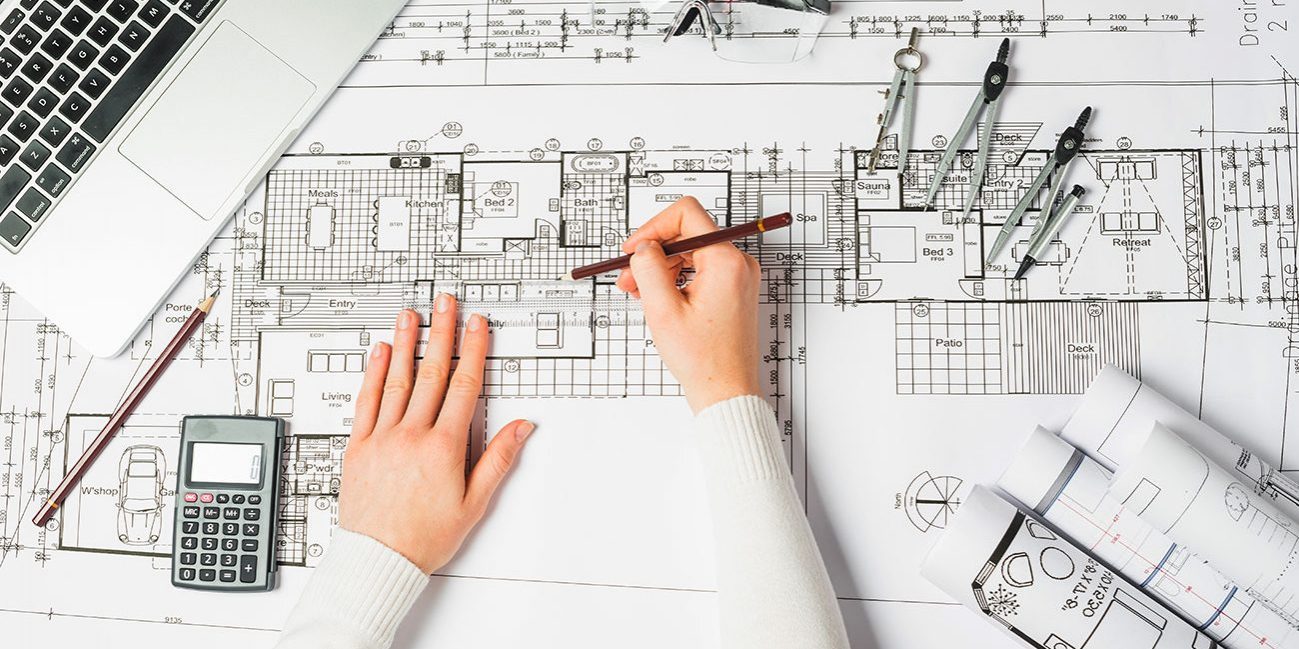Architect Services Detailed: What to Expect from Beginning to End
Architect Services Detailed: What to Expect from Beginning to End
Blog Article
Recognizing the Diverse Profession Paths Available for Aspiring Architect
As an aspiring Architect, you have a world of occupation paths waiting on you. Each path uses unique difficulties and chances to use your imagination and technical expertise. Whether you're attracted to typical style or the nuances of sustainable style, there's a niche that straightens with your interests. Recognizing these diverse choices can form your professional journey, yet which direction will you choose to discover initially?
Conventional Style: Creating Frameworks and structures
Traditional design concentrates on developing structures and frameworks that mix capability with aesthetic appeal. As you discover this area, you'll appreciate the detailed equilibrium in between type and purpose. You'll find out to attract motivation from historic designs, including components like symmetry, materials, and workmanship. Your styles can reflect social heritage, showcasing local practices while satisfying modern-day needs.
You'll create skills in preparing, model-making, and site evaluation, allowing you to envision and connect your ideas effectively. Engaging with customers, you'll require to recognize their vision and translate it into possible designs.
Furthermore, building codes and sustainability practices are necessary in your work, ensuring your structures are eco friendly and safe. As you grow in your occupation, you'll find possibilities in domestic, commercial, or perhaps restoration tasks, each offering one-of-a-kind obstacles. Accepting conventional design leads the method for a fulfilling profession that pays tribute to the past while shaping the future.
Urban Planning: Forming Communities and Public Spaces
As an aspiring Architect, you can play an essential function as a metropolitan planner, changing how communities function and interact. By utilizing neighborhood involvement approaches, you'll guarantee that locals have a voice in shaping their setting. And also, incorporating lasting style principles will aid create rooms that not only meet today's requirements but likewise shield the future.
Function of Urban Planners
While several may consider architects as the sole enthusiasts behind structures, urban organizers play a crucial duty in shaping the wider landscape of areas and public rooms. They analyze land use, zoning legislations, and community requires to produce lasting settings that boost lifestyle. By working together with different stakeholders, you'll aid develop parks, transport systems, and suburbs that promote social interaction and availability. Urban organizers additionally concentrate on environmental considerations, making certain that growths incorporate eco-friendly areas and assistance biodiversity. Your expertise in spatial layout and area characteristics permits you to visualize future growth while preserving cultural heritage. In this essential role, you'll straight influence just how people experience their surroundings, making every job a chance for favorable change.
Neighborhood Engagement Methods
Effective neighborhood involvement strategies are important for city planners to ensure that the voices of homeowners are heard and valued in the planning procedure. To foster significant dialogue, you ought to prioritize open forums and workshops where community members can reveal their ideas and issues. By proactively listening and integrating feedback, you'll create spaces that reflect the community's needs, eventually leading to even more successful and sustainable metropolitan atmospheres.
Sustainable Layout Concepts
When designing city rooms, incorporating sustainable layout concepts is essential for producing atmospheres that thrive both environmentally and socially. Think about incorporating green rooms, like yards and parks, to boost biodiversity and enhance air top quality.
Designing with water preservation in mind is likewise essential-- believe regarding rain gardens and permeable surface areas to manage stormwater. Entailing community participants during the planning process assurances that the rooms you create meet their requirements and motivate social interaction. By accepting these principles, you'll add to dynamic, lasting urban landscapes that profit everyone.

Landscape Style: Developing Sustainable Outside Environments
As you check out landscape design, you'll discover vital design concepts that produce stunning and practical exterior rooms. Lasting techniques play a vital function in making sure these environments grow while lessening environmental influence. And also, you'll find a variety of profession chances that allow you to make a real difference in exactly how individuals engage with nature.
Layout Principles in Landscape
Recognizing style concepts in landscape style is essential for developing sustainable exterior settings that balance with nature. You'll need to contemplate components like scale, balance, and proportion to guarantee your styles feel cohesive and welcoming. Including native plants not only boosts biodiversity but likewise lowers water use, making your landscape resilient. Believe concerning the circulation of space and how people engage with it; paths and seating locations should invite exploration and leisure. Additionally, pay attention to seasonal modifications, making with products that enhance the surroundings year-round (Architect). By prioritizing sustainability and aesthetics, you can create outdoor spaces that enrich the neighborhood and promote wellness. Welcoming these concepts will certainly set a strong foundation for your job in landscape architecture.
Lasting Practices Overview
Lasting practices in landscape style not only concentrate on aesthetic appeals however likewise prioritize eco-friendly wellness and resource preservation. By incorporating native plants, you enhance biodiversity and lower the read here requirement for chemical fertilizers and pesticides. Implementing reliable watering systems assists conserve water and minimizes overflow, protecting close-by ecosystems. You can make areas that advertise soil health, such as exercising and utilizing organic products permaculture principles. In addition, incorporating environment-friendly facilities, like rain yards and porous sidewalks, aids in stormwater monitoring and minimizes urban warmth. When you develop outside atmospheres with sustainability in mind, you add to a healthier world and give rooms that cultivate neighborhood connection. Inevitably, these techniques ensure your styles benefit both individuals and the setting for several years ahead.
Occupation Opportunities Expedition
With a strong foundation in lasting techniques, landscape design supplies a selection of profession courses that permit you to make a significant impact on the atmosphere. You can work as a landscape developer, creating cosmetically pleasing and useful outside areas, or concentrate on environmental repair, helping to revive broken communities. Urban organizers often work together with landscape engineers to produce eco-friendly rooms in metropolitan settings, enhancing city livability. If you're enthusiastic about education, take into consideration becoming a landscape architecture teacher, inspiring future generations. Additionally, you could deal with nonprofits concentrated on environmental sustainability or take part in research study to innovate brand-new practices. Each course not just shapes gorgeous atmospheres but additionally promotes a healthier planet for future generations.
Lasting Design: Concentrating on Eco-Friendly Practices
As you discover your profession in architecture, accepting eco-friendly techniques can establish you apart in an affordable field. Sustainable design concentrates on producing buildings that reduce environmental effect while improving resident well-being. By incorporating renewable products, energy-efficient systems, and lasting building techniques, you'll contribute to a greener future.
Beginning by obtaining expertise of environment-friendly accreditations like LEED or BREEAM, which can reinforce your credentials. Think about just how all-natural light, air flow, and thermal performance can maximize design. Collaborate with designers and ecological experts to introduce remedies that decrease waste and preserve sources.
Do not fail to remember the importance of community involvement-- appealing neighborhood stakeholders can influence styles that balance with the setting. As customers significantly focus on sustainability, your know-how in environment-friendly practices will certainly not only draw in tasks yet likewise meet your interest for accountable style. Accept this crucial facet of the profession, and watch your profession flourish.
Historical Preservation: Securing and Recovering Social Heritage
While you start on your architectural trip, take into consideration the vital function of historical conservation in preserving our social heritage. This field concentrates on the security and remediation of substantial buildings, sites, and frameworks that tell the tales of our past. By participating in historical conservation, you'll help guard the architectural legacy that forms area identity.
As a historical preservation Architect, you'll analyze historic importance and assess the problem of structures. You'll function very closely with guardians and historians to assure authentic repair techniques are utilized. This profession course allows you to mix creativity with research, allowing you to develop remedies that value initial products and craftsmanship.
Your job not only adds to sustainability by reusing existing buildings but also cultivates a pop over to these guys sense of satisfaction within neighborhoods. Embracing this course will certainly aid you come to be a guardian of history, protecting the stories and visual appeals that enhance our lives.
Interior Architecture: Enhancing Indoor Spaces
Historical preservation and interior design both share a commitment to enhancing the developed setting, yet they concentrate on various facets. While historical conservation emphasizes keeping a structure's historic and cultural worth, interior style nos in on optimizing indoor rooms for capability and looks.
As an ambitious Architect, you'll locate that indoor design enables you to mix creative thinking with technical skills. You'll make spaces that not only look great but likewise promote convenience and performance. This field includes understanding exactly how light, shade, and materials interact within a space, influencing mood and functionality.
You'll work with different tasks, from property homes to business workplaces, making sure that each atmosphere fulfills the demands of its residents. By focusing on customer experience, you can change interiors into useful and inspiring spaces, making a substantial influence on just how people communicate with their surroundings. Accept the chance to boost interior environments and form the way individuals function and live.
Industrial Layout: Merging Capability With Aesthetic Appeals
Industrial design plays an important function in creating items that seamlessly mix visual appeals with capability, making sure that what you use day-to-day is not only visually attractive yet likewise useful. As an aspiring Architect, you can immerse on your own in this field, concentrating on creating every little thing from furnishings to consumer electronics. Your work involves understanding user demands, products, and making processes, enabling you to develop ingenious options that improve daily experiences.
In industrial design, you'll frequently collaborate with engineers, marketers, and producers, ensuring that your designs are not only gorgeous but additionally viable. You'll discover to stabilize type and function, focusing on usability without giving up design. By honing your abilities in sketching, 3D modeling, and prototyping, you'll be well-appointed to bring your concepts to life. This profession course provides a vibrant setting where imagination satisfies functionality, making it a satisfying selection for engineers interested in shaping the items of tomorrow.
Frequently Asked Concerns
What Educational Accreditations Do I Need to Come To Be an Engineer?
To come to be a designer, you'll need a specialist degree in design, usually a Bachelor's or Master's. Additionally, you'll need to complete a teaching fellowship and pass the Architect Registration Evaluation to exercise lawfully.
Exist Qualification Demands for Various Building Career Paths?
Yes, there're accreditation needs for numerous building paths. Architect. You'll require to pass exams, total internships, and often go after specialized training, relying on your chosen emphasis, like landscape design, urban design, or historical conservation
What Software Abilities Are Important for Architects Today?

Exactly How Can I Gain Practical Experience While Researching Design?
You can obtain practical experience by interning at architectural companies, joining layout competitions, offering for neighborhood jobs, or teaming up with schoolmates on real-world assignments. These opportunities boost your abilities and build useful connections in the sector.
What Task Opportunities Exist Outside Traditional Style Firms?
You can discover various task chances outside conventional style firms, like city preparation, interior decoration, landscape design, construction management, actual estate advancement, or perhaps functions in sustainability consulting. Each deals unique challenges and rewards.
Whether you're site web drawn to standard design or the subtleties of lasting design, there's a specific niche that lines up with your interests.When creating metropolitan spaces, incorporating lasting style principles is critical for creating settings that grow both ecologically and socially.As you check out landscape design, you'll discover important layout concepts that create lovely and useful exterior rooms.Comprehending design concepts in landscape architecture is essential for creating lasting outside atmospheres that integrate with nature.In commercial design, you'll frequently team up with marketers, makers, and engineers, guaranteeing that your designs are not just gorgeous but also feasible.
Report this page